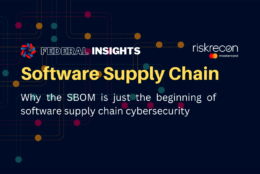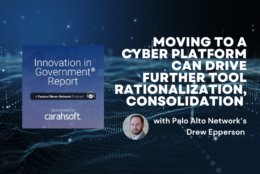SDFM The Business of Defense
-
In a hybrid, multicloud world, how can your agency deliver services effectively, efficiently and securely?
October 04, 2023 -
In federal hiring, creating frequent touchpoints with candidates early and often is key — and agencies can do it without exhausting all their time and resources.
October 04, 2023 -
Managing, consolidating, and interpreting vast and intricate data is paramount in the complex labyrinth of federal budgeting. Yet, an undeniable challenge lurks in the shadows: the obstacle posed by disparate systems and data silos.
October 02, 2023 -
The size and far-flung nature of the tax agency means that it has begun numerous cyber projects that can help it meet the administration’s zero trust demands. But Treasury IG team’s four recommendations aim to help IRS harmonize its efforts.
October 02, 2023 -
The typical user never sees the thousands of pages that detail how to craft code that ensures a digital document accepts content or that allows other functionality. Yet, that coding if not precise can provide havens for malicious payloads.
October 02, 2023 -
The more daily life becomes software dependent, the more urgent the need for organizations deploying software – including federal agencies – to ensure security in the software supply chain.
September 29, 2023 -
Modernization requires understanding the ultimate users’ needs and the challenges constituents have dealing with systems an agency might deploy. A principal challenge to modernization, according to Guidehouse partner Arijeet Roy, stems from the cost of maintaining and operating legacy systems.
September 29, 2023 -
Drew Epperson, the vice president of federal engineering at Palo Alto Networks federal, said agencies need to think about modernizing their cyber tools as they transform their entire IT infrastructure.
September 29, 2023 -
Federal agencies are adopting key cybersecurity practices like zero trust and software supply chain risk management. Sarah Cleveland, senior strategy advisor at ExtraHop, says it’s critical government and industry work together to address emerging cybersecurity challenges.
September 29, 2023 -
Join hosts Mark Masselli and Margaret Flinter for this important conversation that’s part of our continuing coverage of Long COVID.
September 28, 2023 -
As the number of individuals afflicted with dementia rises, the demand for specialized medical care and support services escalates, putting immense strain on a healthcare system that is already stretched thin. RTI is an independent, nonprofit research institute dedicated to addressing the world's most critical problems with science-based solutions in pursuit of a better future.
September 27, 2023 -
When evaluating the use of AI, the core issue for any operation is data collection, storage, use and regard to it's future implications.
September 26, 2023 -
Host Bob Leins, CPA® and co-host Karen Schaeffer, CFP®, welcome Kay Bransford, Daily Money Manager, Professional Financial Advocate & Fiduciary, MemoryBanc.
September 26, 2023 -
Join us for a panel discussion with moderator, Tom Temin, and agency and industry leaders who will discuss the latest thinking in achieving mission assurance and data protection using zero trust, segmentation and monitoring strategies.
September 26, 2023 -
NSA, OPM and the State Department are using new tactics and methods to recruit and retain cyber workers as these positions become harder to fill.
September 25, 2023















